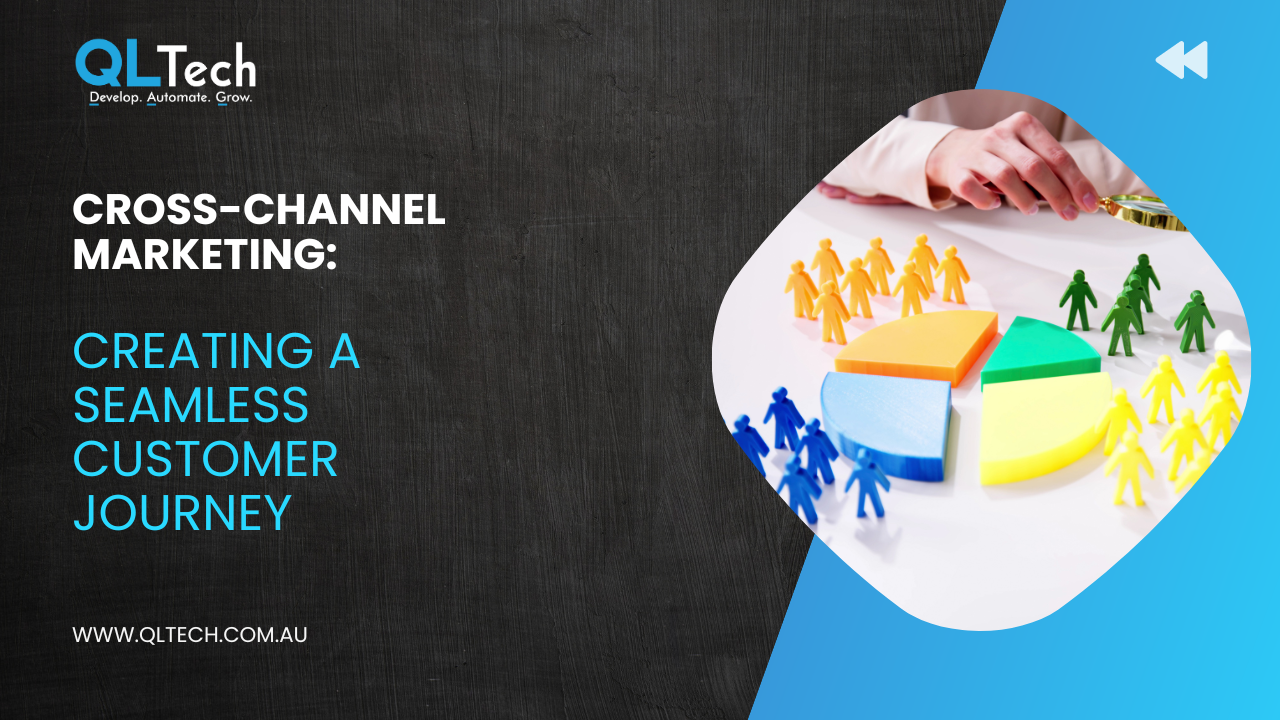In the dynamic landscape of modern marketing, businesses are recognising the importance of delivering a seamless and cohesive experience across multiple channels. Cross-channel marketing involves strategically integrating and aligning marketing efforts across various platforms to create a unified and engaging customer journey. This article explores the significance of cross-channel marketing and provides insights into creating a seamless experience for customers.

1. Holistic Customer Experience:
- Unified Brand Presence: Cross-channel marketing ensures a consistent brand presence across different platforms, creating a cohesive and recognisable identity for customers.
- Integrated Messaging: Messages and content are aligned across channels, providing a holistic and synchronised experience that resonates with the target audience.
2. Enhanced Customer Engagement:
- Multi-Platform Interaction: Cross-channel marketing encourages customers to engage with a brand on multiple platforms, fostering deeper connections and interactions.
- Interactive Content: Engaging content is tailored to suit the preferences and behaviors of users on different channels, increasing overall customer engagement.
3. Data-Driven Personalisation:
- Unified Customer Data: Integrating data from various channels enables businesses to create a comprehensive view of customer behavior, allowing for personalised and targeted marketing efforts.
- Segmentation and Targeting: Cross-channel strategies leverage data insights to segment audiences and deliver personalised content that resonates with specific customer segments.
4. Seamless Omnichannel Experiences:
- Channel Integration: Cross-channel marketing goes beyond mere presence on different platforms; it integrates channels to ensure a seamless transition for customers moving between online and offline touchpoints.
- Omnichannel Consistency: Brands that effectively implement cross-channel strategies provide customers with a consistent experience, whether they interact through a website, social media, or in a physical store.
5. Optimised Customer Journey:
- Journey Mapping: Cross-channel marketing involves mapping the customer journey to understand touchpoints and optimise the path from awareness to conversion.
- Channel-Specific Strategies: Tailoring strategies for each channel ensures that the customer journey is optimised for the unique characteristics of each platform.
6. Real-Time Responsiveness:
- Dynamic Content Delivery: Cross-channel marketing allows for real-time adjustments to content and messaging based on customer interactions and feedback.
- Agile Campaign Optimisation: Businesses can optimise campaigns on the fly, responding promptly to changing market conditions, customer preferences, and emerging trends.
7. Multi-Platform Campaign Integration:
- Integrated Campaign Themes: Cross-channel marketing integrates campaign themes and messaging across platforms, creating a cohesive narrative that resonates with the target audience.
- Unified Calls-to-Action: Campaigns include consistent calls-to-action, guiding customers seamlessly through the desired actions, whether it’s making a purchase, signing up for a newsletter, or engaging on social media.
8. Social Media Integration:
- Strategic Social Engagement: Cross-channel strategies incorporate social media as a key element, recognising its role as a powerful platform for customer interaction and brand promotion.
- Unified Social Messaging: Consistent messaging and branding are maintained across social media channels, ensuring that customers experience a unified brand personality.
9. Measurement and Analytics:
- Cross-Channel Attribution: Robust analytics tools enable businesses to attribute conversions and interactions across various channels, providing insights into the effectiveness of each marketing touchpoint.
- Data-Driven Insights: Cross-channel analytics inform decision-making, helping businesses allocate resources to the most effective channels and refine marketing strategies for optimal results.
10. Adaptability to Customer Preferences:
- Preference-Based Communication: Cross-channel marketing allows businesses to adapt communication methods based on customer preferences, whether through email, mobile apps, social media, or other channels.
- Responsive to Channel Trends: Staying attuned to channel trends enables businesses to align their marketing strategies with the evolving preferences and behaviors of their target audience.
Conclusion: Elevating Marketing Effectiveness through Integration
Cross-channel marketing is not just a trend; it’s a strategic imperative for businesses aiming to deliver a seamless and engaging customer experience. By integrating marketing efforts across diverse channels, businesses can build stronger connections with their audience, foster brand loyalty, and ultimately drive success in the competitive marketplace. As technology evolves and consumer behaviors continue to shift, the ability to create a unified and consistent brand presence across channels will be a key differentiator for businesses seeking to thrive in the digital age.
